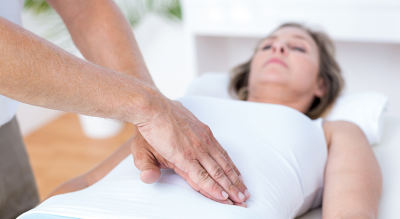Osteopathy: Could it solve your gynaecological problems?
mis à jour le 14 July 2015 à 18:30Painful sexual intercourse, irregular periods, repeated bouts of cystitis… What if some manipulation could fix the problems?
WHY VISIT AN OSTEOPATH?
While we are aware of the benefits of manual therapy for lumbago, we often ignore that it is also effective in treating feminine troubles. By going directly through the mechanical dysfunctions that are at the origin of the symptoms, it can reduce the pains associated with sexual intercourse or periods, regulate sporadic or heavy bleeding, eliminate leaks or urinary infections, or calm the symptoms of premenstrual syndrome: stomach troubles, headache, sleeping disorders, irritability… It soothes hot flashes connected to the menopause and also turns out to be one of the rare options that relieves the physical sufferings connected to the endometriosis. In case of fertility disorders, consulting an osteopath can help identify and correct a possible blockage, resulting from bad posture or a badly-positioned uterus. Finally, during pregnancy, the manipulations limit the back problems, breathing and digestion, and help prepare for childbirth.
HOW DOES A SESSION WORK?
The purpose of the osteopath is to reinstate mobility to the uterus and the gynaecological anatomy in general. For that purpose, the practitioner makes manipulations at the level of the pelvis, which correct the position of organs and act with the hormonal system. If needed, he/she sometimes works at the level of the skull to rebalance the neurovegetative system, which is the source of headaches or hot flashes. These external operations can be completed by a vaginal or rectal touch, which we are, of course, free to refuse. Good to know: only doctors or midwives trained in osteopathy have the right to use these internal techniques.
WHAT ARE THE CONTRAINDICATIONS?
Ask your doctor’s opinion in case of cancer or serious illness. The osteopathy with gynaecological aim is misadvised in women who are less than three months’ pregnant.
HOW TO FIND A GOOD PRACTITIONER
Ask advice from your gynaecologist or listen to word of mouth. You can also look to the association of osteopaths for serious therapists. Generally, two to three sessions are enough to fix the problem. If there is no improvement in this time, it is useless to persevere.
Veronique Chaouat




